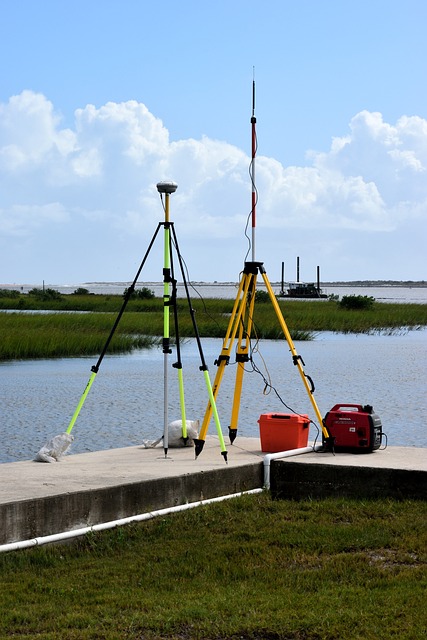The DMV vehicle verification process is a mandatory step for registering a car, which includes a VIN Inspection to confirm the vehicle's authenticity. Prospective registrants must identify their nearest DMV VIN inspection site and compile necessary documents such as the vehicle title or registration, bill of sale, proof of purchase, driver's license, and proof of insurance for the VIN number verification. This process is critical for ensuring the vehicle's legal compliance and preventing fraud. The actual VIN check involves document submission followed by an inspector verifying that the VIN on the vehicle matches the title and registration documents. Costs for this inspection vary by state, so it's important to research DMV fees in your area. Upon successful verification, the DMV will issue a registration, allowing legal operation within the state. Being well-prepared with all required documentation and understanding the local DMV VIN inspection requirements can streamline the process and reduce stress. Some states offer online VIN verification services, and it's crucial to be familiar with the specific DMV VIN check requirements for your region to ensure a smooth experience. After passing the VIN number verification and any necessary registration inspection, you must pay the associated DMV fees to finalize your vehicle's information in the state database.
Navigating the DMV’s VIN verification process is a critical yet often misunderstood aspect of vehicle ownership. Whether you’re new to the state and need to transfer your registration or you’ve just purchased a new vehicle, understanding the steps involved in a VIN Inspection is key to a smooth process. This article demystifies the DMV vehicle verification procedure, guiding you through the necessary documentation, associated costs, and the locations of DMV VIN inspection sites. By following our step-by-step guide, you’ll ensure your vehicle’s registration is accurate and fraud-free, adhering to DMV VIN check requirements with ease. Let’s streamline your experience and make the DMV VIN inspection process as straightforward as possible.
- Understanding the DMV VIN Verification Process: A Step-by-Step Guide
- Essential Documents and Costs for DMV VIN Number Verification
- Locating DMV VIN Inspection Sites and Preparing for Your Visit
Understanding the DMV VIN Verification Process: A Step-by-Step Guide
When navigating the DMV vehicle verification process, understanding each step is crucial for a smooth and efficient experience. The VIN Inspection, or Vehicle Identification Number inspection, is an integral component of the DMV’s efforts to ensure the authenticity of registered vehicles. This process begins with locating your nearest DMV VIN inspection site, as not all DMV offices perform these inspections. Typically, you can find a list of DMV VIN inspection locations on the official DMV website or by contacting them directly. The VIN number verification involves a trained inspector meticulously checking your vehicle’s VIN against the title and registration documents to confirm their consistency and authenticity. This step is pivotal in the DMV registration inspection process, as it helps to prevent fraudulent activities and ensures that your vehicle is legally registered.
To proceed with the DMV VIN check requirements, you must prepare the necessary documents, which usually include the vehicle title, a bill of sale, or any proof of purchase. Additionally, you may be asked to present a valid driver’s license and proof of insurance. The costs associated with the VIN verification process can vary by state; it’s advisable to check the specific DMV fees for your area beforehand. The entire VIN inspection process is designed to be straightforward: Once at the designated location, you submit your documents and vehicle for inspection. The inspector will then perform a detailed examination of the VIN, ensuring it matches the information on your paperwork. If everything aligns correctly, the DMV will issue a registration, and you can legally operate your vehicle in your new state. Understanding these steps beforehand allows you to approach the DMV with confidence and preparedness, making the process of registering your vehicle as hassle-free as possible.
Essential Documents and Costs for DMV VIN Number Verification
When navigating the DMV vehicle verification process, having the correct documents and understanding the associated costs are crucial for a smooth experience. For a VIN number verification, the most essential document you’ll need is the vehicle title or registration that includes your Vehicle Identification Number (VIN). This unique string of characters serves as your car’s fingerprint and must match the DMV’s records to complete the registration process. Additionally, you may be required to present a valid driver’s license and proof of insurance. The specific documents and costs can vary by state, so it’s important to check with your local DMV VIN inspection locations for their exact requirements.
The VIN verification process at the DMV is designed to ensure that the vehicle you are registering is not stolen or fraudulent, and that all information associated with it is accurate. The cost of a DMV VIN check can differ depending on where you are located; however, it is generally a relatively minor expense compared to the potential complications of an unverified vehicle. Some states may offer online VIN verification services, which could reduce the need for an in-person visit and associated fees. Be prepared to pay the necessary DMV registration inspection fees upon completion of the VIN number verification process, as this is typically when your vehicle’s information is officially recorded into the state’s database. Understanding these requirements beforehand will help you avoid any unnecessary delays or additional charges.
Locating DMV VIN Inspection Sites and Preparing for Your Visit
When preparing for your DMV vehicle verification process, locating an authorized DMV VIN Inspection site is the first step. These sites are strategically placed across regions to ensure accessibility for vehicle owners. You can find these locations by visiting your state’s DMV website or contacting them directly. The website typically provides a searchable map or list of approved inspection facilities, often including details like address, hours of operation, and the types of services they offer. Once you’ve identified an inspection site, it’s crucial to ensure that you have all the necessary documentation for the VIN number verification. This typically includes your vehicle’s title, registration, and any bill of sale or purchase agreement if the vehicle is new to you. Additionally, be prepared with valid identification and proof of insurance.
Before visiting the DMV VIN inspection location, familiarize yourself with the VIN verification process requirements. These usually mandate that the VIN must be clearly visible and match the VIN on your registration documents. The vehicle should also be in a roadworthy condition to pass the registration inspection. To streamline your visit, gather all paperwork, including any forms or applications your DMV requires for registration renewal or transfer of ownership. Double-check the DMV VIN check requirements specific to your state, as they can vary. This proactive approach will make your DMV experience more efficient and less stressful. Remember to arrive early to account for any unforeseen delays and to have ample time to complete the inspection process without rushing. With all preparations in place, you’ll be well on your way to successfully completing your DMV vehicle verification, ensuring your vehicle is properly registered and compliant with state regulations.
When navigating the DMV vehicle verification process, particularly for a VIN number verification, it’s crucial to be well-informed and prepared. This article has outlined each step of the VIN inspection process, from understanding what’s required to locating DMV VIN inspection sites and preparing for your visit. With the right documents and an awareness of associated costs, you can streamline your experience, ensuring accurate registration and preventing potential fraud. Remember that a thorough VIN verification process is key to maintaining vehicular integrity within the records of the Department of Motor Vehicles. By adhering to the guidelines provided, you can make the DMV registration inspection as smooth and efficient as possible.



